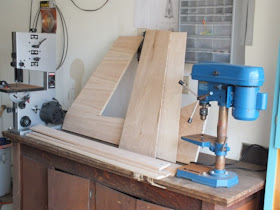GHOST OMELETS
These are super fast and easy. All you need is:- Two eggs per person
- One and a half circular-shaped slices of lunch meat per person. We used ham, but Canadian bacon, summer sausage, or even bologna would work.
- Your favorite shredded cheese
- Butter or margerine
- Salt and pepper
Melt a little butter in a round, flat skillet. Non-stick or well seasoned cast iron works best. Cut a half-circle of lunch meat into two eye pieces. Crack two eggs into a bowl. Add salt and pepper to taste. Whisk eggs with a fork, then pour them onto the hot skillet. Sprinkle with shredded cheese, then arrange eye pieces and a full circle of lunch meat for the mouth. Cook about 2 minutes or until the omelet is firm, using a lid to cover the skillet so that the top side will cook without flipping. Gently slide the cooked omelet onto a plate.
The kids can have even more fun once the ghost omlete is on their plate:
HAPPY HALLOWEEN!









